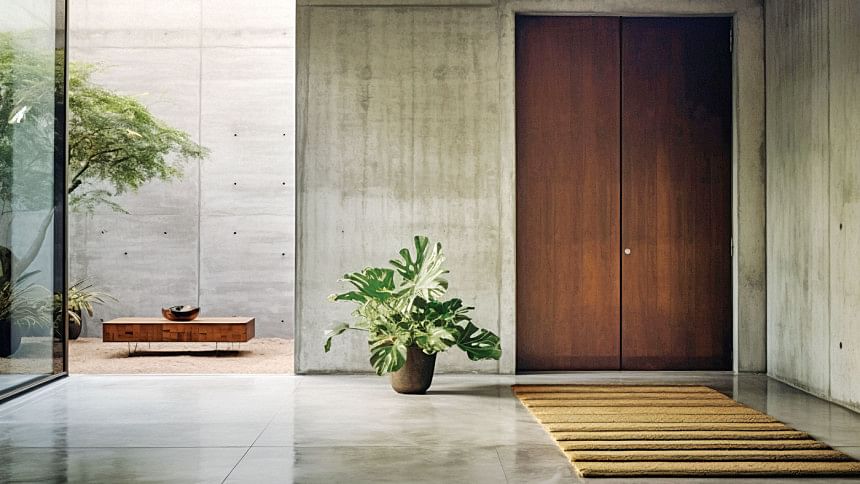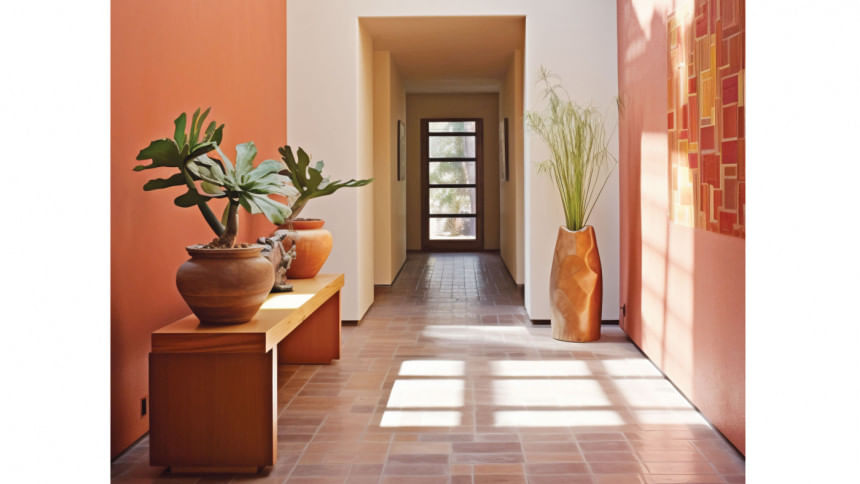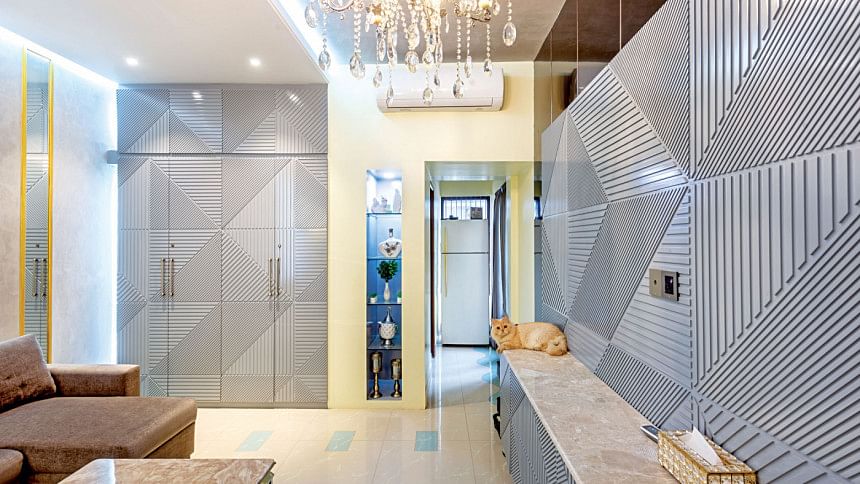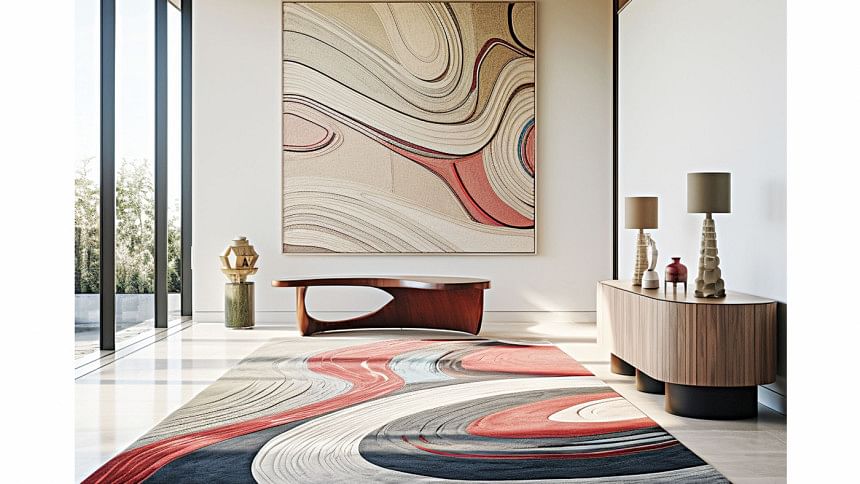Elevate Your Apartment with Impeccable Floor Tiles

Step into any modern apartment today, and you are likely to find a canvas of stylish floor tiles beneath your feet—an artful blend of function and flair. Floor tiles serve as the cornerstone of modern urban dwellings, intertwining durability and design. They come in a multitude of textures, colours, and sizes, making them popular choices for enhancing the visual appeal of living spaces.
"Compared to other flooring materials, ceramic tiles are stronger, more long-lasting, resistant to water, and can also handle underfloor heating, keeping your feet warm in colder weather. Hence, ceramics are a solid choice for apartments—tough, easy to clean, and they look nice too," said Mohammad Tanvir Hossain, Manager of Customer Service Intelligence at Great Wall Ceramics.
Understanding the basics of choosing the most suitable floor tile for each room can lead to more informed purchasing decisions and help you avoid expensive replacements.
Accentuate Different Living Areas with Ceramic Elegance
Ceramic tiles provide versatile design options suitable for flooring various areas in an apartment. "Colour and texture are crucial considerations while choosing floor tiles. Except for the kitchen and washroom, we recommend using tiles with identical colour and texture throughout the apartment to achieve a homogeneous and more spacious look," remarked Quazi Fahima Naz, Partner Architect at ArchDoers.

Ceramic tiles offer a sleek, stylish look in the living room, complementing various styles—from modern minimalism to classic elegance—that can be dressed up with rugs and furniture. They are also highly convenient for bathroom floors due to their water resistance, durability, and easy cleaning. Their practicality shines in the kitchen and dining space as they handle spills and stains effortlessly, and their non-porous surface helps maintain hygiene. Ceramic tiles are also fire-resistant and can endure heat from hot kitchen pans or skillets without any damage to the glazed surface. They can withstand outdoor conditions and are suitable for terraces and balconies as well, adding a touch of elegance to your relaxation space. The wide range of styles, colours, and patterns available allows for creative expression and seamless integration into any decor theme of different spaces in an apartment.
Points to Ponder Before Choosing Floor Tiles
Navigate the maze of types
Ceramic tiles come in many varieties, which can make selecting the right tile a bit confusing. "Ceramic tiles can be categorised into two main types based on water absorption: porcelain tiles with a 0.5% absorption rate and ceramic tiles with an 11-15% absorption rate. From a production perspective, there are also polished and unpolished tiles," said Mahmudur Rahman, Brand Manager at RAK Ceramics. Polished tiles have a glossy, gleaming surface, making them aesthetically pleasing and scratch-resistant. According to Rahman, they are the most popular choice among modern apartment owners. Farhana Ahmed, Senior Executive at DBL Ceramics, agreed, noting that nano-polish, premium, and glossy tiles are also among the most favoured choices of their buyers.
It is important to note that these tiles can be either glazed or unglazed. Unglazed polished tiles are less slippery than glazed ones and are ideal for high-traffic and wet areas, such as kitchens or bathrooms. Glazed tiles are coated with a layer of liquid glass before firing, resulting in intricate and striking designs. Although the glaze can slightly reduce their longevity, it remains intact over time. In contrast, unpolished and unglazed tiles share a similar appearance and texture and are comparatively durable due to their denser and thicker composition. Unpolished tiles also offer low maintenance, better foot traction, and are more cost-effective, but their matte finish may be less appealing and limit design options.

Style your floor right
Aesthetic considerations also play a vital role in tile selection. "Tiles with a matte finish are suitable for most indoor spaces, while rustic tiles are more appropriate for balconies or terraces. Beige, ivory, or white tiles and those with a marble texture can be chosen to achieve an elegant and sophisticated look," suggested Architect Naz. Marble textures and natural stone looks are highly preferred among modern homeowners. In response, ceramic manufacturers have developed tiles that mimic the appearance of natural stones like slate, travertine, and marble. To achieve a more authentic natural stone feel, these tiles may feature heavy textures, chiseled or hammered edges, and even a tumbled stone effect.
Asymmetrical designs, geometric patterns, and wood-like textures are also available for various looks. The texture of ceramic tiles corresponds with their style: a tile designed to mimic tumbled stone or slate will have a rough, irregular texture, while a tile that resembles marble or granite will offer a smooth, polished surface. Additionally, tiles come in various finishes, from matte to semi-gloss to high gloss, allowing for different degrees of shine and enhancing their natural stone appearance.

Know the PEI score
The PEI score is a rating that categorises tiles based on their hardness and the amount of abrasion they can withstand. It helps apartment owners decide whether a tile is suitable for a particular space, considering the amount of foot traffic or wear and tear the space might endure. According to the Brand Manager of RAK Ceramics, homeowners should choose tiles with a PEI rating of 4 or above to withstand heavy foot traffic in busy areas of the house. "Opt for durable tiles with higher PEI ratings and slip-resistant surfaces suitable for humid conditions for the Bangladeshi climate," said Hossain of Great Wall Ceramics.
Tile size depends on room size
Choosing the right size of floor tile depends on the size of the space and the desired look you are aiming to achieve. Smaller rooms can be tiled with larger tiles to create a visual sense of increased space and reduce grout lines, giving a seamless appearance. "The expertise of the installer and availability in the market can also affect tile size considerations. Usually, large tiles of 4ft by 2ft are recommended for floors," said Architect Naz of ArchDoers. "24x24 inch tiles are the most commonly used; however, even larger sizes are becoming popular among modern buyers," agrees Rahman from RAK Ceramics. Using tiles that are the wrong size can disrupt the overall look of the room by showing too many grout joints, making the floor appear cluttered and messy. The key is to be mindful of the room size and choose the appropriate scale to combine all design elements for a perfectly tiled floor.

Price considerations and installation
While flooring with ceramic tiles might be costlier than many other materials, the upfront cost comes with long-term benefits and hinges on several key considerations. Firstly, although initial costs may be higher, ceramic tiles are renowned for their resilience against wear and tear, requiring fewer replacements and repairs over time. Secondly, maintenance is an advantage of ceramic tiles; their ease of cleaning and resistance to stains minimise ongoing upkeep expenses, offering savings and convenience in the long run. Additionally, the aesthetic versatility of ceramic tiles enhances the overall appeal of an apartment, potentially increasing its resale value. By weighing these aspects, apartment residents can make a suitable initial investment in ceramic tiles for their enduring benefits and value.
It is always wise to buy and install floor tiles from the same production schedule to avoid shade variation. Another important element of the installation process is grout, which is the filler between tiles once they have been laid out on the floor. Grout enhances the rigidity and durability of the tile joints and prevents dirt or debris from entering between or underneath the tiles, which may tamper with the adhesive and cause the tiles to be displaced over time. Using contrasting grout shades can make the tiles stand out, creating a bold look. Alternatively, matching the grout colour to the tiles creates a more subtle effect on the floor. "Hire experienced installers familiar with local conditions. Ensure proper subfloor preparation and use quality adhesives suitable for the country's climate," shared Hossain regarding floor tile installation.

 For all latest news, follow The Daily Star's Google News channel.
For all latest news, follow The Daily Star's Google News channel. 



Comments